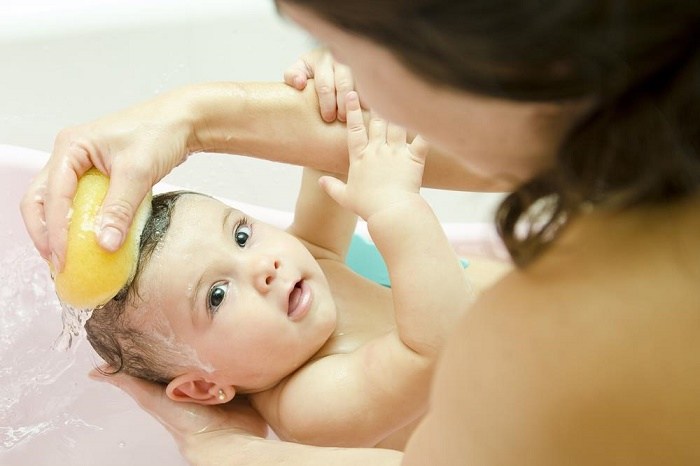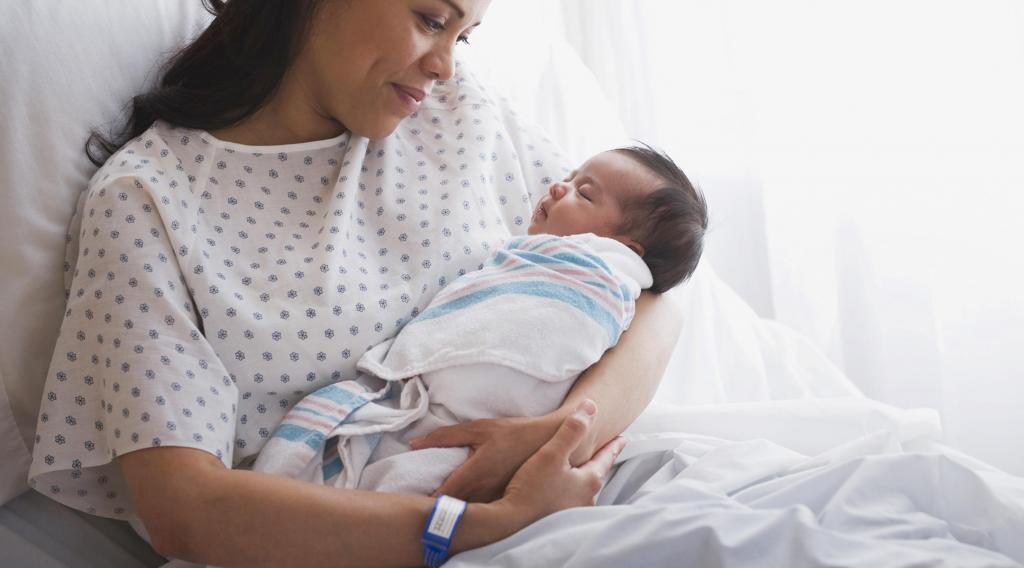In the article, we will consider why temperature occurs after cesarean.
The body of a woman after natural delivery is very weakened and susceptible to a variety of infections. If we talk about cesarean section (surgical delivery), then this is a big stress for the female body. Some pregnant women often underestimate the severity of such surgery. Often the temperature rises after cesarean. This can be triggered by both harmless factors and pathological.

Temperature Measurement Rules
Caesarean section is a complete surgical operation in which the abdominal and uterine muscles are dissected in order to extract the fetus from the pregnant woman. At the moment, this manipulation is not an innovation and is well distributed. In the period after the operation, the woman must carefully monitor her own well-being, follow all the recommendations given by the doctor, in particular, regularly take temperature measurements.
Start measuring the temperature after cesarean section should be the next day after surgery, and this should be done four times a day. Measurements should continue all the time while the woman is in the maternity hospital. The obtained indicators must be recorded, indicating the specific measurement time. This approach allows you to track the dynamics.
It is important that the temperature should be measured by placing the thermometer under the tongue, and not in the armpit (the temperature in this place will be raised in any case, due to the onset of lactation).
To obtain reliable results, it is recommended that a woman lie down for about 15 minutes before the measurement procedure to calm down. Emotional overload and physical activity are quite capable of causing an increase in temperature. The use of an electronic thermometer remains preferred.
After the woman is discharged, she should continue to monitor her body and measure the temperature if the slightest signs of malaise occur.

What should be the temperature after cesarean?
Normal postoperative temperature
After a cesarean section, a woman often has a slight increase in temperature. This situation is considered normal. Many are interested in how long the temperature holds after a cesarean section. During the first day, indicators can reach 38 degrees. Such hyperthermia is a natural reaction of the body in response to serious surgery. On the second day after cesarean section, the indicators drop to 37-37.5 degrees. Such indicators persist for about 7-10 days, then return to normal. But in some women, fever up to subfebrile level can be observed within a month. This is due to the individual characteristics of the body.
Temperature after cesarean is a natural reaction provoked by innocuous factors not related to infection:
- Dehydration
- Hormonal adjustment. The female body after pregnancy and delivery begins to restore its hormonal background.
- The use of drugs. Under the influence of some of them, blood circulation improves, which, in turn, can provoke a slight increase in temperature.
- The formation of lactation and the begun process of milk production.
- Emotional stress in a young mother, which is due to the awareness of the operation and the birth of a child.
- Beginning of the suture healing process. Minor hyperthermia helps accelerate metabolic processes and speedy tissue regeneration.

Pathological causes of hyperthermia after surgical delivery
The occurrence of high temperature in a woman in labor the day after cesarean section (above 38 degrees) can be a sign of a developing inflammatory process. If an infection of the body has occurred, indicators can increase to 39-40 degrees.
Despite the fact that cesarean section has an advantage - the uterine cavity is carefully monitored after the fetus is removed (in particular, the specialist removes all the remains of the membranes), it is impossible to completely exclude the possibility of infection.
According to statistics, the probability of infection after cesarean section reaches 8%. In addition, such infection takes the fourth place in the list of reasons for the death of women in childbirth.
You should also take into account the general weakening of the female body after delivery, whether it be natural or artificial.
The most common complications after cesarean section are caused by the following pathological causes.

Pneumonia (lung infection)
It occurs, as a rule, after 4 days after surgery. The disease can be accompanied by general weakness, coughing, shortness of breath. The risk group includes women who smoke, suffer from obesity, as well as those who underwent surgery under general anesthesia.
Wound infection
This reason is most likely if the operation was carried out urgently, in the absence of the necessary antibacterial preparation. The risk group includes women who are obese, an exhausted body, as well as those who took hormonal medications. Infection can penetrate into the external and internal sutures, causing their suppuration.
Lactostasis, mastitis are often after childbirth
These phenomena usually develop 2-3 weeks after surgery. They are associated with insufficient excretion of milk and blockage of the milk ducts. In the early stages of pathologies, a child can eliminate breast engorgement with his intensive breast sucking. Expressing is also effective. With advanced forms of pathology, accompanied by the appearance of purulent discharge, often there is a need for surgical intervention. Why is the temperature rises after cesarean?

Pyelonephritis
It is an inflammatory pathology of the kidneys provoked by an infection. The disease is accompanied by chills, soreness in the lower back. Women are not always able to recognize the infection, as they often explain their negative state by tissue healing after surgery.
Damage to the bladder, intestines, and ureters that occurred during surgery. Due to trauma, the process of inflammation develops already in the first day after a cesarean section.
Cystitis (infection of the genitourinary system)
Pathology often develops due to the installation of a catheter. But the corresponding infectious agents are able to penetrate the female body long before delivery. The cunning of cystitis lies in the fact that a woman can perceive its manifestations as natural pain after surgery.
Endometritis
This pathology is an inflammatory process that affects the internal mucous membrane of the uterus. In addition to an increase in temperature, a woman has the appearance of purulent secretions that have an unpleasant smell. In the process of palpation, pain in the uterus is manifested, while laboratory tests reveal an increased concentration of white blood cells in blood and smears. Endometritis is a common complication after cesarean section. It usually develops during the first five days after the intervention, but in some cases a woman can notice its symptoms only after discharge from the maternity hospital.

What to do after cesarean section?
The need to contact a specialist
If a woman’s temperature rises higher than 37.5 degrees, then this is a fair reason for refusing to be discharged from the maternity hospital. Specialists comprehensively and carefully examine a woman. If a complication is detected, the patient is prescribed the necessary therapy. In some cases, transfer to another hospital unit is indicated.
In cases where hyperthermia develops after discharge from the maternity hospital, you should not postpone the visit to a specialist (even if there are no accompanying symptoms of the disease).
Certain pathologies, in particular internal wound infection, pneumonia, endometritis, pose a great danger to health if the necessary therapy is not available. Sometimes there is even a threat to the life of a young mother, as sepsis can develop.
Medical consultation is required even in cases where fever was noted for several days, and then dropped to normal.
How to bring down the temperature at home after cesarean?
Methods of treatment and use of medicines
First of all, a woman should understand that it is forbidden to self-medicate with a pathological increase in temperature. You can use only those medicines that are prescribed by a specialist after the necessary studies.
Usually, doctors prescribe to patients not only antibacterial therapy, but also anti-inflammatory and antipyretic drugs.
If a woman does not breastfeed, then many such medicines are available to her. But with lactation, only drugs based on ibuprofen and paracetamol are allowed. It is allowed to use drugs of the same name - Ibuprofen, Paracetamol. Some women often use the medicinal syrup Efferalgan for children. In the instructions for use there are no contraindications in this regard. The medication is based on paracetamol, and due to the fact that the medicine has a childhood form, the concentration of the active component in it is small. Thus, the effect on the body is gentle.

It is important to strictly follow the instructions for use with Efferalgan Syrup for children.
Experts do not advise trying to bring down the temperature if it is less than 38 degrees. At higher rates, it is already recommended to take special funds.
Thus, a woman should be alert to her health and consult a doctor as soon as the temperature is 37.5 after cesarean or higher. In other cases, mild hyperthermia is a normal sign of tissue healing.